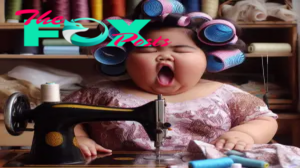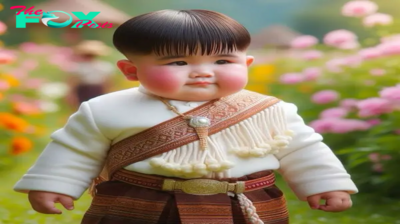Lifestyle
“Twins of Diverse Shades: Navigating Identity and Acceptance”. 88

The story of Amanda and Michael Biggs’s twins, Marcia Millie Madge and Millie Marcia Madge Biggs, born via artificial insemination, is one that highlights the complexities of race and identity. Despite their parents’ hopes for mixed-race children, they were surprised by the stark differences in their daughters’ skin tones at birth. While one sister had significantly darker skin, the other had a lighter complexion, leading to confusion and questioning from others as the girls grew older.

Amanda describes her daughters as “miracles in a million,” acknowledging the rarity of such cases and the curiosity they often evoke from others. While some may question their relationship or express interest out of curiosity, Amanda insists that she has not encountered racism but rather constant curiosity about her daughters’ unique appearance.

Scientists emphasize that race is a socially defined term, shaped by historical events and societal perceptions rather than distinct biological categories. Marcia and Millie, now adults, echo their mother’s sentiments, stating that they have faced questions and skepticism but do not view it as overt racism.

This narrative resonates with the experiences of Lucy and Maria Aylmer, another set of twins who faced similar challenges due to their contrasting skin tones. Maria recalls feeling envious of her sister’s lighter skin and straight hair, while Lucy endured teasing and name-calling because of her pale complexion.

Despite the challenges they have faced, both sets of twins emphasize the importance of acceptance and understanding, urging others to look beyond superficial differences and embrace diversity. Their stories serve as reminders of the complexities of identity and the need for empathy and respect in navigating racial differences.
-

 Lifestyle8m ago
Lifestyle8m agorr As the story unfolds, curiosity piques as two silver-maned infants emerge from a mother with an ebony hue, unraveling a captivating mystery that leaves minds eager for answers.
-

 Lifestyle8m ago
Lifestyle8m agorr In a heartwarming display of resilience and love, the online community is touched by the inspiring tale of a joyous family nurturing 10 children all under the age of 14. Going beyond all odds, they epitomize the beauty of a sprawling, harmonious family, enchanting hearts across the digital landscape.
-

 Lifestyle1h ago
Lifestyle1h agoShanghai Art Fair ART021 is Coming to Hong Kong for the First Time This Summer
-

 Lifestyle1h ago
Lifestyle1h agoGabi Champ shows off her perfect body in a beautiful swimsuit
-

 Lifestyle1h ago
Lifestyle1h agoSupermodel Eva Savagiou confidently shows off her figure in a splendid room that makes all men fall in love
-

 Lifestyle2h ago
Lifestyle2h agoHow Taylor Swift and Selena Gomez are Poised to Enter the Nine-Digit Club. nobita
-

 Lifestyle2h ago
Lifestyle2h agoDavid Pearson on Making Great Napa Wines at Joseph Phelps
-

 Lifestyle2h ago
Lifestyle2h agoMahira Khan reacts to Arijit Singh's 'Zaalima' shout-out



























